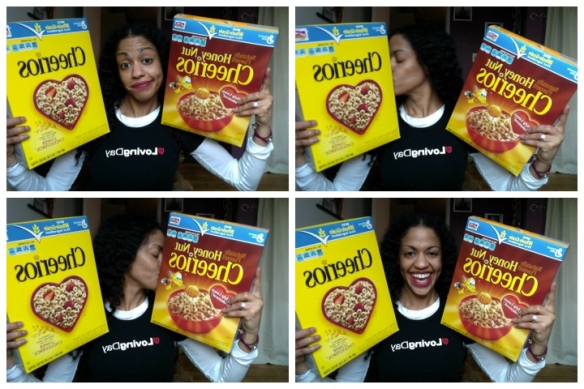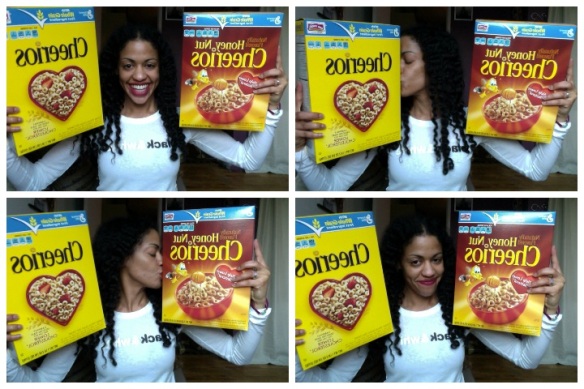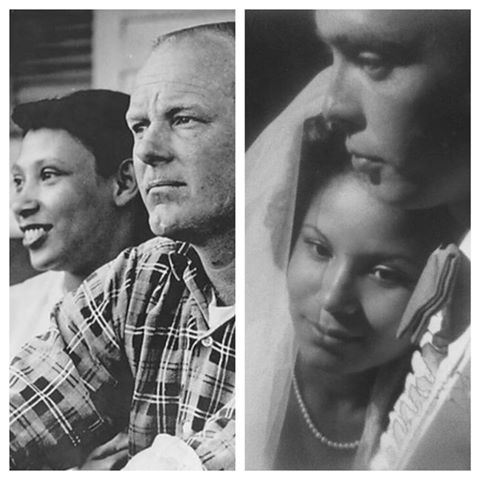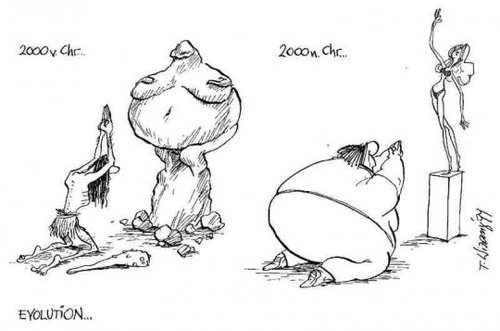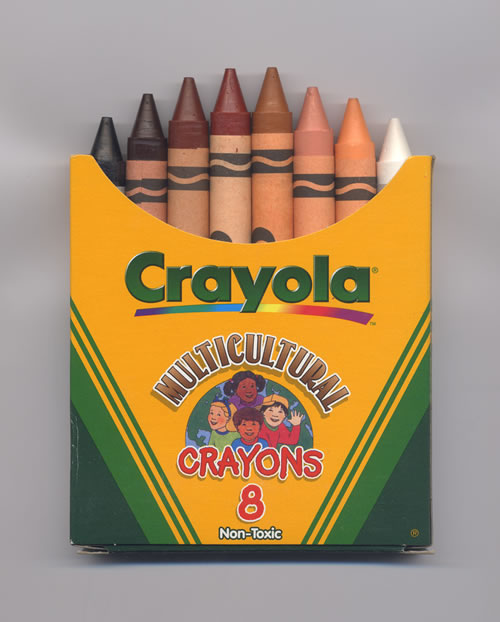Category Archives: advertising
…and then
It happens to be Loving Day which is what prompted me to finally get around to posting about the Cheerios. Happy Loving Day! Interracial Marriage (black/white) has been legal for a grand total of….46 years! That’s only ten more years than I have existed! So in the grand scheme, if there is still a small to medium segment of the population who simply has not taken advantage of any opportunity to grow out of this debilitating mindset, well, that’s only to be expected… and it’s too bad for them… and absolutely ok with me actually. Love people where they are, right?
Here’s a nice article that brings together the Cheerios and the Lovings.
Opinion: The importance of ‘Loving’ in the face of racism

Editor’s note: June 12 is the 46th anniversary of Loving v. Virginia, which made interracial marriage legal in the United States. Thousands of people nationwide celebrate that anniversary as “Loving Day’. Ken Tanabe is the founder and president of Loving Day, an international, annual celebration that aims to build multicultural community and fight racial prejudice through education. He is a speaker on multiracial identity, community organizing and social change through design.
By Ken Tanabe, Special to CNN
(CNN) – Racism is alive and well in 2013, and what’s striking is the recent notable examples aimed at interracial couples – or one of their children.
Even breakfast cereal commercials aren’t safe. A recent Cheerios ad depicting an interracial couple and their multiracial child got so many racist remarks on YouTube that the company had to disable the comments.
There is nothing out of the ordinary about the commercial, except that the parents happen to be an interracial couple.
But the truth is, racially blended families are becoming more ordinary every day, due to the 1967 Supreme Court decision that declared all laws against interracial marriage unconstitutional.
Opinion: Two different marriage bans, both wrong.
Today is the 46th anniversary of that decision, and one in seven new marriages in the United States is interracial or interethnic. Multiracial Americans are the fastest-growing youth demographic.
Number of interracial couples in U.S. reaches all-time high:
While the negative comments about the Cheerios commercial made it newsworthy, there were also many others who showed their support for the Cheerios brand.
Multiracial Americans of Southern California, a multiethnic community group, started a Facebook album for people to post photos of themselves holding a box of Cheerios. And in articles and in social media, supporters expressed gratitude to General Mills for depicting a multiracial family.
The weddings of two multiracial couples from high-profile families also prompted racist comments online. Lindsay Marie Boehner, daughter of House Speaker John Boehner, married Dominic Lakhan, a black Jamaican man. And Jack McCain, son of Sen. John McCain, married Renee Swift, a woman of color.
The reaction to these marriages is reminiscent of the response to the marriage of Peggy Rusk – the daughter of then-Secretary of State Dean Rusk – and Guy Smith, a black man. In 1967, interracial marriage was a cover story, several months after laws against interracial marriage were struck down.
Things have changed since then, but not enough.
In a 2011 Gallup poll, 86% of Americans approved of “marriage between blacks and whites.” In 1958, the approval rating was 4%. But it makes me wonder: What do the other 14% of Americans think? Apparently, many of them spend a lot of time leaving comments online.
The election of Barack Obama inspired many of us to hope that widespread racism was a relic of the past.
And while he was elected to a second term, we must not be complacent when it comes to racism in our daily lives. We must seek out opportunities to educate others about the history of our civil rights.
Dr. Martin Luther King Jr. wished that his children would “one day live in a nation where they will not be judged by the color of their skin but by the content of their character.” I wonder what he would think of our collective progress as the 50th anniversary of his “I Have a Dream” speech approaches.
On June 15th, the 10th annual Loving Day Flagship Celebration in New York City will draw an expected 1,500 guests. And while many participants are multiracial, anyone can host a Loving Day Celebration for friends and family, and make it a part of their annual traditions.
We need to work collectively to fight prejudice through education and build a strong sense of multiethnic community. If we do, one day we might live in a nation where the racial identities of politicians’ children’s spouses are no longer national news, and cereal commercials are more about cereal than race.
The opinions expressed in this commentary are solely those of Ken Tanabe.
Mildred and Richard Loving
now…
Certainly you’ve heard of this, right? The barrage of hateful comments left under the commercial featuring a mixed race family on Cheerios’ YouTube channel. Comments so offensive that General Mills deleted and disabled them. “It’s 2013!!!” is the gist of the typical response from “normal” people on the internet. “I want to eat so many Cheerios right now,” was quite literally my response. And I got a little choked up. Not about the comment fiasco. I stopped getting choked up about youtube comments years ago, thank God, and it comes as absolutely no surprise to me that hateful voices rose from the trollers. None. So all I’m left with is this beautiful commercial, with this adorable child who makes some sincerely delightful faces depicted in a family that almost resembles mine in a way that I cannot recall having seen before. Ever. I am 36 years old. I was in commercials as a kid. I have never seen a commercial like this. That is what is shocking. That in 2013, this near-revolutionary advertising. People took note, did double takes. Heads were scratched. Fears and tempers were flared. Clearly this is long overdue. So, thank you Cheerios!! Thank you for looking at your community and your consumers and seeing what is actually in front of you. And being “bold” enough to “endorse” it. By endorsing reality, you make us face it and give us the opportunity to adjust to it. Maybe even to like it You reflect me and all the others like me who had never experienced the normalization of our lives in a television commercial. This makes for a healthier society. That makes for a healthier me.
And then there’s this! Maybe it’s not as bad as it seems after all.
Turns Out Americans Love ‘Controversial’ Cheerios Ad
Perhaps Racist YouTubers Not Representative of Country as a Whole
June 5, 2013
Last week, a new ad from Cheerios was deemed controversial when media outlets discovered that the racist contingent of the idiocracy known as the YouTube comment section trashed the ad for featuring a mixed-race couple and a biracial child.
But according to data from Ace Metrix, Americans like the ad. In fact, “Good for Your Heart” (called “Just Checking” on YouTube) tested the highest of six new Cheerios ads this year and garnered attention and likeability scores 9% and 11% “above the current 90-day norm for cereals.”
General Mills rightly decided not to be swayed by the rantings of deranged internet comments, telling USA Today that the supposed uproar would not affect future casting decisions.
According to Ace Metrix, the ad — created by Saatchi & Saatchi, New York — “appealed to all age/gender demographics with the exception of males over 50.” While that could be taken as a statement on racial attitudes, Ace Metrix noted that ads with babies tend to perform poorly with this demographic regardless of the race of the child.
The report, which surveyed over 500 consumers, went on to note: “The ad scored best with African-Americans, who collectively scored the ad a 721, followed by Asian Americans and Hispanics. While African Americans and Hispanics generally award advertising higher scores than their ethnic counterparts — the 721 score is 100 higher than average for African-Americans.”
And filtering verbatim commentary from those surveyed, those who specifically mentioned “couple” did so in a positive manner.
“I liked that the couple is mixed race,” wrote one respondent. “Good to see that on TV, but in a subtle manner.”
word cloud from Ace Metrix survey comments
not. hilarious.
or, “how things got this way.” or, “thank you, racist advertising, for so effectively screwing us up.”
I had never heard the “made at night” thing before reading the comments on the picture I posted last week. “Funny” how that’s still going around all these years later. Kind of reminds me of the time my three year old self was called tar baby by a fellow (white)toddler. I don’t think this is an ad. It’s probably from a children’s book (perhaps that commenter’s favorite childhood bedtime story.) Even “better.”
These previous two are another reason why “light skin vs. dark skin dodgeball tournament” cannot be funny to me. Ever. I have answered my own question. Not ok.
copy reads:
Jell-O is known to all sections as “America’s Most Famous Dessert.” In the South, for instance, it is inexpensive enough to be found in the cabins of the old plantations. It is delicious enough to meet the standards of good living at the “Big House.” It is dainty enough for milady’s afternoon tea. It is appealing enough to turn the sinful, of any color, away from his neighbor’s melon patch.
Let’s break this down:
“cabins of the old plantations” = slave quarters.
“sinful of any color” = just kidding, we mean the darkys… get it? melon patch! ha! they sure do love watermelon!
I, personally, have always hated jell-o.
offensive or no?
Upon reading the headline of the article my mom emailed me, I was all set to be very offended by these photos. After reading it and seeing the pics, I am not offended. Is that bad? When I read “blackface” I think poorly applied shoe polish and outrageously red lipstick. When I saw these pictures and read Schiffer’s statement that they were playing with different men’s fantasies, I thought it made sense. Lagerfeld and Dom Perignon hired one super Supermodel to play two characters (for lack of a better analogy). To me this is not offensive. I don’t think Schiffer kept a black model from working that day. What if Naomi Campbell had done the ad in “whiteface”? Would that be offensive? I also wonder if Heidi Klum would have agreed to participate in this. I would love to get her take on it.
Claudia Schiffer strikes controversial pose in ‘blackface’ for German magazine
BY MEENA HARTENSTEIN
DAILY NEWS STAFF WRITER

Claudia Schiffer is one of the world’s best-loved supermodels, but she’s drawing a firestorm of criticism for her latest magazine cover.
The blond stunner is at the center of a racially-charged controversy after a photo of her in “blackface” hit the Internet this month.
In the photo, which was shot by Karl Lagerfeld two years ago as part of an ad campaign for Dom Perignon, Schiffer is disguised in an Afro wig and dark face paint, prompting accusations of insensitivity.
“It shows poor taste and it’s offensive,” Shevelle Rhule, fashion editor at black lifestyle magazine Pride, told U.K.’s Daily Mail. “There are not enough women of color featured in mainstream magazines. This just suggests you can counteract the problem by using white models.”
The photo resurfaced when German magazine Stern Fotografie repurposed the image as one of six hardback covers for its 60th anniversary issue.
The other covers also feature Schiffer in various costumed looks shot by Lagerfeld – as a sexy secretary, a leather-clad cop, Marie Antoinette, and even an Asian woman in a kimono.
Schiffer’s rep defended the series, saying, “The pictures have been taken out of context. The images were designed to reflect different men’s fantasies. The pictures were not intended to offend.

Read more HERE
please allow me
…to harp on this theme for the rest of the day. A slight diversion from the usual mixed-race programming that I feel important (and even related) in terms of how we’re sold on ideas of good or bad, clean or dirty, fat or beautiful, so that we can buy something to fix ourselves. It’s really bad today. It started long ago. There’s not much money to be made off of self-acceptance and inner beauty, I suppose.
the world’s prime aesthetic object
I think this article is brilliant and I think that everyone should read it. So, here you go, everyone!
Women and body image: a man’s perspective
Ever wondered why a man can look at an advert featuring a six-pack and laugh, while a woman might look at a photograph of female perfection and fall to pieces? William Leith thinks he might have uncovered the answer
By William Leith
Plenty of guys have told me this story. The guy in question is preparing to go to a party with his girlfriend. She is trying on shoes and dresses. He is telling her how good she looks. She tries on more shoes, more dresses. And then: the sudden, inexplicable meltdown. She crumples on the bed. Something is horribly wrong. Now the party is out of the question.
At this point the other guys will say, ‘Yeah – she looks great.’ And: ‘She looks fine.’ And: ‘I saw her the other day, wearing those shorts.’ And: ‘She is hot.’ Then the first guy will say, ‘That’s what I kept telling her. And that’s when she got really upset. She said, “You just don’t understand.”‘
It’s true – men, by and large, do not understand. In her book The Beauty Myth, Naomi Wolf made this point very powerfully. When a woman has a crisis of confidence about the way she looks there is nothing a man can do to console her.
‘Whatever he says hurts her more,’ says Wolf. ‘If he comforts her by calling the issue trivial, he doesn’t understand. It isn’t trivial at all. If he agrees with her that it’s serious, even worse: he can’t possibly love her, he thinks she’s fat and ugly.’
But it doesn’t stop there, says Wolf. What if the man were to say he loves the woman just as she is – that he loves her for her? An absolute no-no, of course, because then ‘he doesn’t think she’s beautiful’. Worse still, though, if he says he loves her because he thinks she’s beautiful.
There’s no way out. It seems to be, in Wolf’s words, ‘an uninhabitable territory between the sexes’. So why don’t men understand? And, given a bit of education, can the situation be improved?
Well, I’m a man, so let’s see. The first thing to say is that, when it comes to their bodies, men have a completely different attitude. I’m not saying they don’t think about their bodies, or worry about them, because they do. But men relate to their bodies in a simple way.
A man’s body is either fine, or it’s not fine. For a man, the body is a practical object. It’s a machine. Sometimes it works well; sometimes it needs fixing. Some guys know how to fix it, by taking up a sport, maybe, or cutting down on the carbs. Some don’t, and go to seed.
Men see their bodies as machines because, for most of their time on this earth, they have defined themselves as hunters and protectors. They equate being attractive with being strong and fast and muscled. That’s a simple concept, isn’t it? And that simplicity is hard-wired into the male brain.
When his girlfriend has a meltdown, and says she hates her body, that is not a simple concept. Unlike men, women do not have a simple relationship with their bodies. They have a complex relationship with their bodies. This is what men often don’t understand. When it comes to their bodies, women are extremely vulnerable – and, what’s more, lots of people take advantage of that vulnerability. This makes the situation worse.
Men don’t have to contend with this – the hair people, and the make-up people, and the fashion people, and the shoe people, and the bra people, and the nail people, and the eyelash people, and the Botox people, and the cosmetic surgery people, and the perfume people, and the hair-removal people. Oh, and the diet people.
Men are not at the mercy of corporate manipulation on remotely this scale. Sure, there are six-packs creeping into our field of vision every so often. And, sure, this is making us feel insecure. I know – I was fat, and it’s no fun being fat, especially with all those pictures of Brad Pitt nagging away.
And then there are the adverts for Lynx, and the Reebok advert in which a man is chased around town by a big fat hairy belly. But for men the message is very direct. Buy some running shoes. Go to the gym. Cut down on the carbs. For men there is no mystery behind the veil of the adverts. You either tackle the situation, or become a fat slob. End of story.
For men the holy grail is within reach – you just need to get fit, and then you’ll be fine; then you can think about something else. But the messages aimed at women are much more complex and confusing. As the American social commentator Warren Farrell has pointed out, women’s magazines often contain articles about being Superwoman, which are next to adverts about being Cinderella.
In other words, the words tell women how to be independent and in control. But the adverts, where the money is, tell them they have to be beautiful.
Farrell said this more than two decades ago – and, shockingly, nothing has changed. There’s a solid pulse running through everything our culture aims at women – be beautiful, be beautiful, be beautiful.
But being beautiful, it turns out, is a near-impossible task. It keeps getting harder and harder. Everybody knows that it entails being slim – and every year the ideal gets slimmer and slimmer. In 1960 the average model weighed 10 per cent less than the average woman. Now she weighs 25 per cent less. Soon she will weigh 30 per cent less. But she doesn’t have the breasts of a skinny woman – nor, as Susie Orbach has recently pointed out, the bottom. To achieve the ideal is vanishingly impossible.
And it’s getting worse. Orbach believes that we are exposed, on a weekly basis, to several thousand images that have been digitally manipulated. And this, in turn, makes more women opt for cosmetic surgery – which, of course, moves the goalposts even farther away.
When lots of people have surgery to make themselves look more beautiful this has the effect of making everybody else feel less beautiful. And this is happening on a global scale – in 2007 people spent £9 billion on cosmetic surgery; the vast majority of them, of course, were women.
So: men are told they should aspire to fitness and strength, and women are told they should aspire to something more nebulous. But that still does not explain, in terms a man could understand, why the female message is so much more powerful and disturbing.
It doesn’t explain why a tenth of women are anorexic, why a growing number are bulimic, why almost half of women, at any given time, are on a diet. It doesn’t quite explain the meltdowns. And it doesn’t explain why women want to be so skinny. Why they think they are fat, when they are not. It doesn’t explain why, when a woman’s body is perfectly attractive, she often thinks it isn’t, and can’t be persuaded otherwise.
In short, it does not explain why a man can look at an advert featuring a six-pack and laugh at it, whereas a woman might look at a picture of Gisele Bündchen and feel a sense of unease that hangs around for days.
John Updike once said that the female body is the world’s prime aesthetic object – we look at it more than we look at anything else, including landscapes, gadgets, cars. In fact, cars and gadgets are often designed to resemble the female body, and landscapes can be painted to remind us of it. When we talk about ‘the nude’ in art we are almost certainly referring to the female nude. As far as nudes are concerned, the male nude is a distant runner-up.
I once wrote the introduction to a book of male nudes by the photographer Rankin; it was a sequel to his previous book of female nudes. One thing struck me above all – male nudes were a much, much harder thing to portray than female ones.
That’s because the female body carries with it a huge weight of iconic significance – thousands of years of being looked at. The female body has meaning. Pictures of the female body can be profound, serious and complex. For thousands of years they have been depicted with reverence. Now imagine having one of those bodies. It puts a bit of pressure on, doesn’t it?
Now I’m beginning to see why women might be so addicted to perfection. They have a lot to live up to – a couple of thousand years of art history, and a couple of thousand airbrushed boobs and bums to deal with every week.
But what started this off in the first place? Why aren’t there so many airbrushed pictures of men around? Of course, these pictures do exist, and their numbers are increasing. But why are women so much more vulnerable to pictures of perfect bodies than men?
In his book The Evolution of Desire, the American psychologist David Buss goes some way towards explaining why this should be so. Since the Stone Age, he explains, men and women have had different attitudes towards sex. Men can pass on their genes with very little risk – all they need is a fertile woman.
But it’s different for women, because pregnancy is incredibly risky. What women need is a man who looks like a good provider – better still, who looks like a proven provider.
So let’s think about our Stone Age man and woman. If he’s going to settle down, and stop playing the field, he wants one thing above all – a woman who looks fertile. More than that, he wants a woman who looks as if she’ll be fertile for many years to come. In other words, he might consider being a provider and protector, as long as his mate looks young, fertile and unblemished.
And now consider his mate. What does she want? Not just a man who is a good hunter and a good fighter, but a man who has a track record as a hunter and fighter. In other words, an older man. And this is not only true of Stone Age couples. In a survey conducted by David Buss, 10,000 people, in 37 cultures, were polled. ‘In all 37 cultures included in the international study on choosing a mate,’ writes Buss, ‘women prefer men who are older than they are.’
Now I’m getting close to understanding why women are so critical of their bodies. Since prehistoric times they have had a hard-wired link to how they look. For tens of thousands of years it was crucial; it could be the difference between having a protector and not having one – between life and death, even.
For men it’s not the same at all. The odd wrinkle or grey hair doesn’t matter. Hell, it might even be an advantage. As long as you’re good at throwing spears and building shelters, you’ll be fine.
Twenty thousand years on, what has changed? Well, as David Buss points out, it’s unlikely that a Stone Age man would have seen ‘hundreds or even dozens of attractive women in that environment’. But now, when he looks at a Playboycentrefold, he is seeing a woman who has competed with thousands of other women for the part – not only that, he’s seeing the best picture out of thousands.
And it’s not just centrefolds, is it? Just look at newsreaders – mostly, it’s a pretty girl and a grey-haired man. Message to men: relax. Message to women: panic! And then there are the girl groups, and the short-skirted girl onCountdown, and even the characters in the Harry Potter films, where the boys are allowed to look like geeks but the girl must look like a model.
As the art critic John Berger wrote: ‘Men look at women. Women watch themselves being looked at. This determines not only the relations of men to women, but the relation of women to themselves.’ It’s a tough one, isn’t it?
Surely guys can understand that, at least. If it happened to us, we’d have a meltdown, too.
re: previous posts
I’ve been meaning to post these things that have some correlation to a few of the week’s previous posts. So now I’m doing it.
- I think Philippa Schuyler and George Bridgetower help to disprove the theory that they were trying to disprove in this ad:
- When I read about Stacey Bush,the white girl who (along with her biracial sister) was adopted by a black woman and is now on a multicultural scholarship, I thought of the mistake that Crayola made when naming this pack of crayons. Maybe Stacey could explain to Crayola the difference between race and culture. Throw in ethnicity and nationality too because a lot of people don’t seem to understand that those words are not synonyms:
- This one goes along with the whole darn blog and it made me smile, so:
just one more census thing
i think this should be the last census post. actually, it’s just something i found amusing. while researching census stuff i came across this ad and it’s one of the silliest things i’ve ever seen… what!?
From the National Association of Latino Elected Officials, who were using the Christmas story from Luke 2 to encourage people to participate in the 2010 census. Luke 2:1-4 says Jesus was born during a census ordered by Caesar Augustus. Although historians question the accuracy of the account, Luke stated that everyone had to return to his ancestral town to be registered for taxes and that Joseph and Mary left Nazareth for Bethlehem.
oh. of course. how did i miss that?


